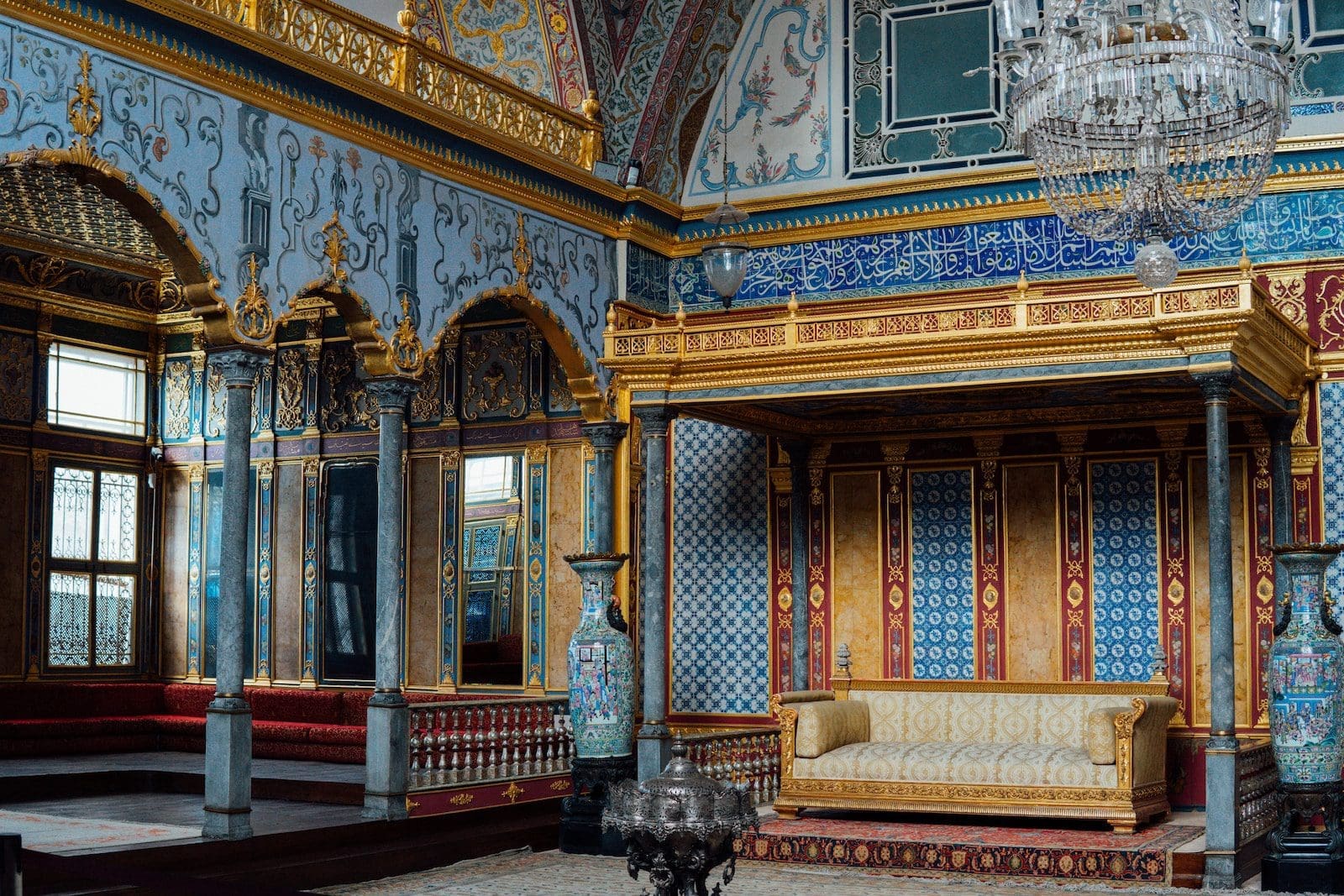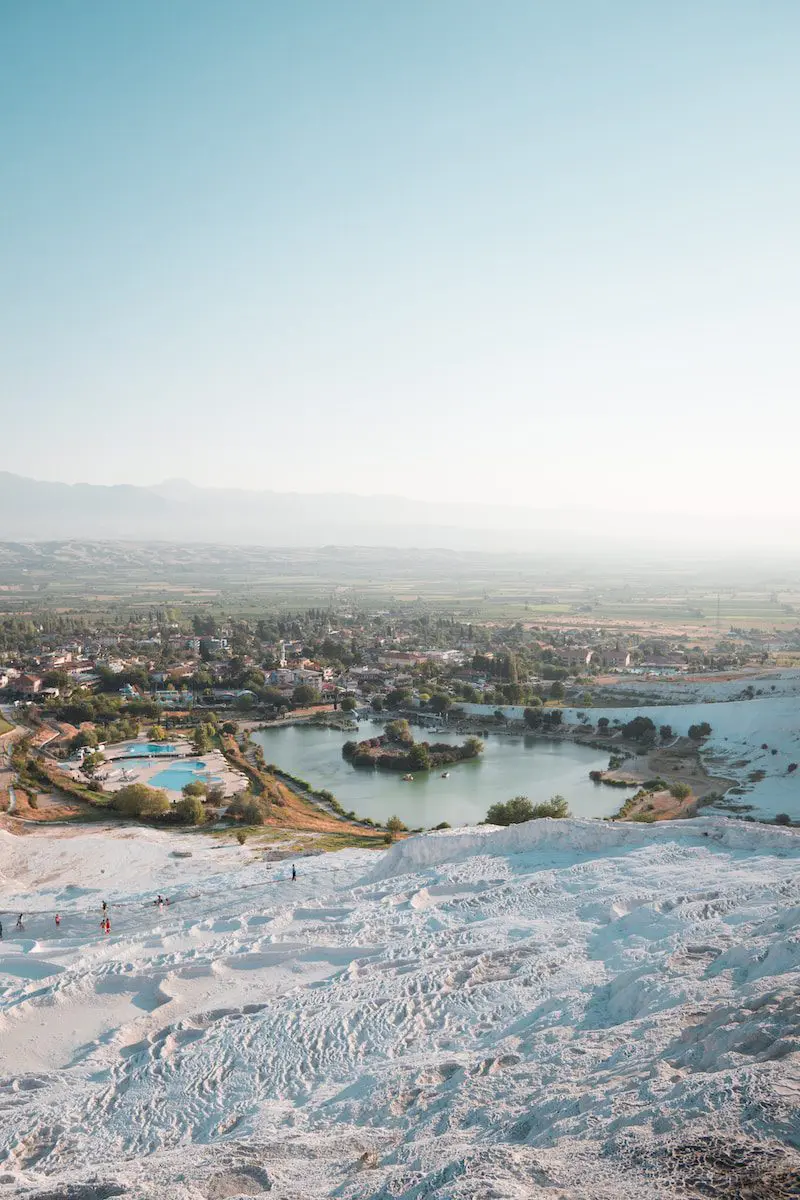
Turkey is home to numerous architectural marvels that showcase its rich history and cultural heritage. One of the most iconic sites is the Hagia Sophia in Istanbul, a masterpiece of Byzantine architecture that later became a mosque and now serves as a museum. Its massive dome, intricate mosaics, and grand interior make it a must-visit destination.
Another notable structure is the ancient city of Ephesus, featuring well-preserved Roman ruins, including the impressive Library of Celsus and the magnificent Theater. The fairy-tale-like landscapes of Cappadocia are adorned with unique rock-cut churches and cave dwellings, offering a glimpse into early Christian history. The Pamukkale terraces, known as the “Cotton Castle,” are a natural wonder with cascading mineral-rich pools formed over centuries.
The Topkapi Palace in Istanbul showcases the opulence and grandeur of the Ottoman Empire, with its lavish courtyards, ornate architecture, and stunning views of the Bosporus. Finally, the Sumela Monastery in Trabzon stands perched on a steep cliff, blending Byzantine and Georgian architecture amidst breathtaking natural surroundings.
These architectural marvels highlight Turkey’s diverse cultural and historical significance, making it a captivating destination for travelers seeking awe-inspiring sights.
Hagia Sophia, Istanbul:
Hagia Sophia in Istanbul is a remarkable architectural marvel that has captivated visitors for centuries. Originally built as a Byzantine cathedral in the 6th century, it later served as a mosque during the Ottoman Empire and is now a museum. With its massive dome, intricate mosaics, and impressive interior, Hagia Sophia showcases the architectural brilliance of both Byzantine and Ottoman civilizations.
It is advisable to book Hagia Sophia tickets in advance to visit Hagia Sophia. As one of Istanbul’s most popular attractions, obtaining tickets beforehand ensures a smooth and hassle-free entry into the museum. Tickets can be purchased online or at the ticket counters located near the entrance.
Galata Tower, Istanbul:
The Galata Tower is a captivating landmark that offers panoramic views of Istanbul’s enchanting skyline. Standing tall in the Beyoglu district, this medieval stone tower has become an iconic city symbol. To make the most of your visit, it is advisable to secure Galata Tower tickets in advance. Obtaining Galata Tower tickets allows you to skip the queues and ensures seamless entry into this historical site.
As you climb the spiraling staircase, you’ll catch glimpses of the city through small windows, building anticipation for the stunning vistas that await you. Once you reach the top, a mesmerizing panorama unfolds before your eyes. Feast your gaze upon the Bosphorus Strait, the Golden Horn, and the bustling streets of Istanbul stretching out in all directions.
Blue Mosque, Istanbul:
The Blue Mosque, officially known as the Sultan Ahmed Mosque, is a majestic architectural marvel located in Istanbul, Turkey. Its nickname, the Blue Mosque, comes from the stunning blue tilework that adorns its interior walls. This magnificent mosque is a significant landmark and a must-visit attraction for those exploring Istanbul.
The Blue Mosque was constructed in the early 17th century during the reign of Sultan Ahmed I. It was designed to rival the grandeur of the Hagia Sophia. The mosque’s exterior boasts six soaring minarets, a unique feature that was a cause of controversy at the time. Its impressive domes and intricate architecture combine elements of Ottoman and Byzantine design.
Upon entering the Blue Mosque, visitors are greeted with a breathtaking sight. The vast prayer hall is adorned with exquisite blue znik tiles, giving the mosque its famous nickname.
Topkapi Palace, Istanbul:

Topkapi Palace, located in Istanbul, Turkey, is a remarkable architectural gem and a significant historical site. It served as the residence of the Ottoman sultans for nearly four centuries and now stands as a museum, showcasing the opulence and grandeur of the Ottoman Empire. The palace complex spans over an expansive area and features a series of interconnected courtyards, buildings, and gardens.
As you enter the palace, you’ll be transported back in time, exploring the rich history and architectural brilliance of the Ottoman era. One of the highlights of Topkapi Palace is the Harem, a section reserved for the sultan’s family and concubines. Step inside to witness the intricately decorated chambers, lavish courtyards, and stunning tilework. This private world offers a glimpse into the opulent lifestyle of the sultans and their households.
Cappadocia Cave Houses:
Cappadocia, located in central Turkey, is renowned for its unique cave houses that dot the landscape. These extraordinary dwellings carved into the soft volcanic rock are a testament to human ingenuity and have become an iconic symbol of the region. The cave houses of Cappadocia offer a fascinating glimpse into the area’s history and cultural heritage.
Dating back centuries, these caves were originally used as dwellings and later transformed into churches, monasteries, and even entire underground cities. Exploring Cappadocia’s cave houses allows you to witness the remarkable architecture and experience the surreal ambiance created by the natural rock formations. Each cave house is unique, featuring hand-carved details and intricate designs.
Some caves have multiple levels, with living quarters, storage areas, and communal spaces interconnected through narrow passages.
Ephesus, Izmir:
Ephesus, located near Izmir in Turkey, is an ancient city that offers a captivating journey back in time. As one of the best-preserved archaeological sites in the Mediterranean region, it attracts visitors worldwide. Once a bustling Greek and Roman city, Ephesus is renowned for its remarkable ruins and historical significance.
As you explore the site, you’ll encounter awe-inspiring structures, grand monuments, and remnants of a vibrant civilization that flourished thousands of years ago. One of the highlights of Ephesus is the Library of Celsus, an iconic structure showcasing the ancient world’s architectural brilliance. Its intricately carved facade and towering columns make it a mesmerizing sight. This ancient library is a testament to Ephesus’s intellectual and cultural legacy.
Pamukkale, Denizli:

Pamukkale, located in Denizli, Turkey, is a mesmerizing natural wonder that is often referred to as the “Cotton Castle.” It is a unique geological formation consisting of cascading terraces of white mineral-rich thermal waters, creating a surreal and ethereal landscape. The name Pamukkale translates to “cotton castle” in Turkish, and it aptly describes the appearance of the terraces.
The mineral-rich waters flow down the terraces, leaving behind a stunning white travertine deposit, giving the illusion of a cotton-like castle. The thermal waters of Pamukkale are renowned for their healing properties and have been a destination for relaxation and wellness for thousands of years. Visitors can walk barefoot on the terraces, enjoying the warm mineral waters as they gently flow over the white travertine formations. It is a truly unique and rejuvenating experience.
Selimiye Mosque, Edirne:
Selimiye Mosque, located in Edirne, Turkey, is an architectural masterpiece and a testament to the grandeur of Ottoman design. It was commissioned by Sultan Selim II and constructed by the renowned Ottoman architect Mimar Sinan in the 16th century.
Selimiye Mosque is one of the most significant examples of Ottoman architecture, showcasing the empire’s cultural and artistic achievements. Its exquisite design, meticulous craftsmanship, and harmonious proportions make it a true marvel to behold.
The mosque’s exterior features massive domes, soaring minarets, and intricately adorned facades. The central dome, in particular, is an architectural triumph, stretching high into the sky and adorned with beautiful calligraphy and intricate geometric patterns.
Basilica Cistern, Istanbul:
The Basilica Cistern, located in Istanbul, Turkey, is an ancient underground water reservoir that is a captivating architectural marvel. Built during the Byzantine period, this subterranean structure showcases the engineering prowess of its time. The cistern’s name, Basilica, derives from the fact that it was initially located beneath a basilica. It served as a crucial water storage facility for the city, providing water for various purposes, including irrigation and drinking water.
Descending into the Basilica Cistern is like stepping into a hidden world. The vast underground space is supported by rows of imposing columns, each standing tall and elegant. The columns were repurposed from various ancient structures and displayed intricate carvings, adding to the mystique of the cistern.
As you explore the cistern, you’ll notice the space shrouded in soft, atmospheric lighting, creating an enchanting ambiance. The still waters below reflect the columns and the vaulted ceilings above, adding to the ethereal experience.
Sumela Monastery, Trabzon:
The Sumela Monastery, also known as the Monastery of the Virgin Mary, is a historic site located in the Altndere Valley near Trabzon, a city in northeastern Turkey. It is situated on the slopes of a steep cliff, approximately 1,200 meters above sea level. The monastery has a rich history dating back to the 4th century AD.
According to legend, two Athenian monks, Barnabas and Sophronius, discovered a miraculous icon of the Virgin Mary in a cave on the cliffside and decided to establish a monastery there. Over the centuries, the monastery underwent several renovations and expansions, becoming an important religious and cultural center in the region.
One of the most remarkable features of the Sumela Monastery is its architectural style. It combines Byzantine, Greek, and Georgian architectural elements, showcasing intricate stonework, frescoes, and ornate decorations. The main complex has several buildings, including a rock church, chapels, kitchens, student rooms, a library, and a sacred spring.



Be the first to comment